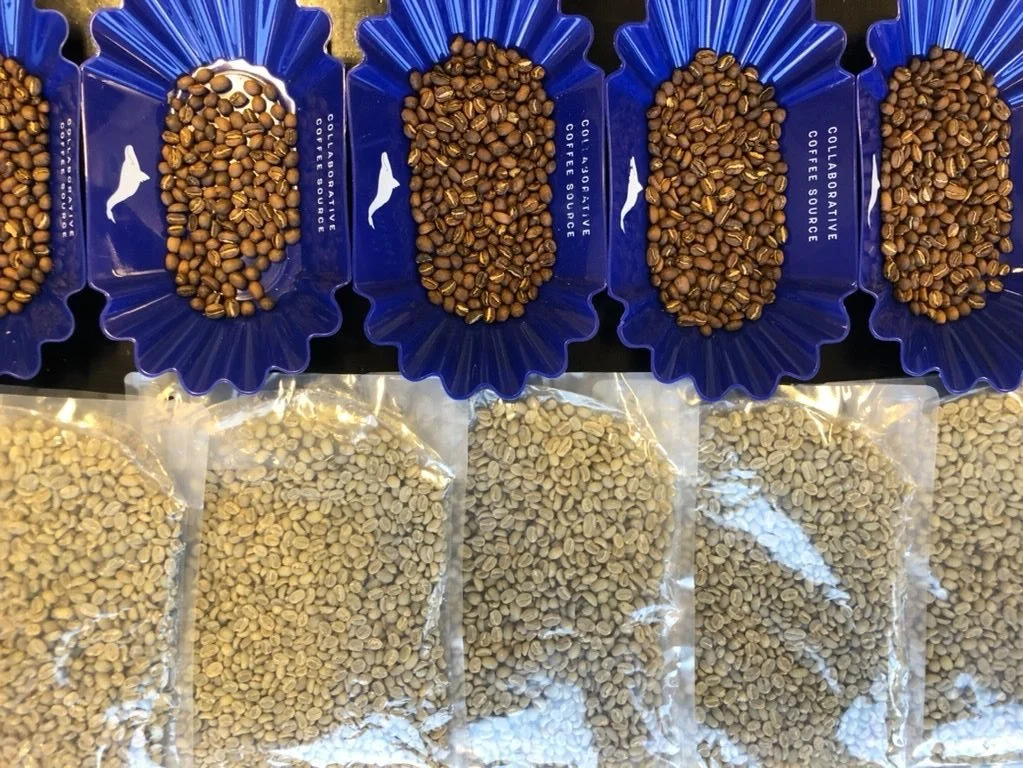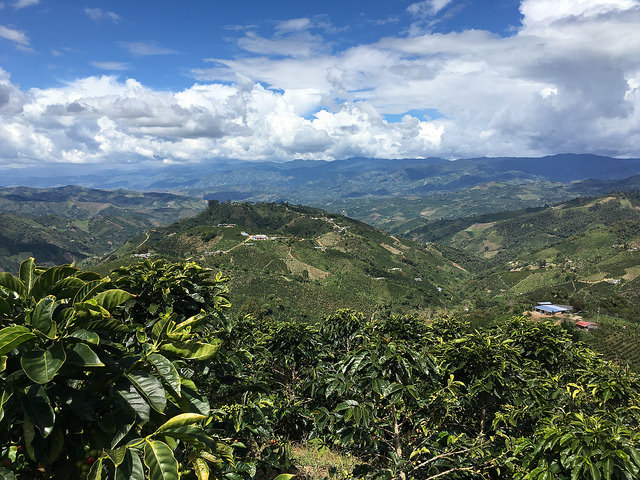Ciro Lugo, Acevedo, Huila
While in Colombia several weeks ago, David and I explored a new microregion that we have high hopes for working extensively with in the future: Acevedo, a municipality located in the southeast corner of the Huila department. When we originally made our travel plans, the idea was to travel when we could cup through the best of the main harvest, which usually takes place between May to July in South Colombia (‘mitaca’/fly is usually in November). But given the many and devastating effects of El Niño this year, the peak of harvest had not yet occurred. In many cases, farmers experienced little to no harvest at all during the main harvest period and were only starting to see mature cherries by the time we arrived in late August. We were presented with some excellent lots anyway, which are now making their way to our East Coast US warehouse in NJ, and this speaks to the quality of the producers we met throughout the week we spent in Acevedo.
We’ve met great people who have provided us with good to great coffees from various departments in Colombia throughout the years, but for one reason or another, we’ve had difficulty finding partners that are just the right fit for us. Colombia was a bit of an elusive origin for us until we started the wonderful partnership we’ve been developing with the always innovative and exceptional team at La Palma & El Túcan over the last two years. But given the boutique nature of their projects, we wanted to find an supplier/exporter who could provide us access to a larger group of small producers growing exceptional coffee with goal of working on a long-term basis.
New partnerships for us, while not always entered into slowly (though they sometimes are) are always very thoughtfully considered. We are not only looking for the best cups from one harvest; we are looking to invest our time and energy (and business) into teams who share our value of building long-term relationships based on mutually beneficial goals, such as understanding what quality is and all that it requires. Put in a different way: there’s a big difference between working with a supplier that will try to do whatever you ask in order to get your business, and one who has confidence, their own ambitions, and the knowledge they’re providing you with their very best efforts and coffee.
The Unsung Work of the Exporter
The work of the coffee grower is the focal point in almost all discussions about origin and coffee production. There are good and very obvious reasons for this. Some of our strongest partnerships are with the people who own/manage coffee plantations and we both love to highlight and want to share their work with as many roasters as we can reach.
In some cases, the most important partnership at an origin is with the exporter. Even in instances where the farm(er) is the basis for a relationship, the coffee simply wouldn’t reach us in the shape we expect if not for the work of a dedicated exporter. Sometimes the farmer and the exporter are one and the same but very often, they are separate. Just as we provide more than logistical services to roasters, exporters provide a vital and wide array of services both to us, as well as to the farmers we buy coffee from.
At its most basic, the work of the exporters we buy coffee from include quality control, packaging, and the organizing and handling of the export process. In several cases they do and have to be involved with much more, bringing me to the introduction to our new export partner in Acevedo.
Fairfield Trading
Alejandro Renjifo, Fairfield’s founder and president, has a background one might not expect from the person that led us along bumpy dirt roads for four hours every day during the week we toured in and around Acevedo meeting with potential (and in some cases now, actual) farmer partners. In his former career as a coffee economist, Alejandro held long stints at both the International Coffee Organization (ICO) and the Federación Nacionale de Cafeteros de Colombia (FNC). One highlight from this past experience is that during his time with the FNC, he was the one to launch its specialty division for North America (!).
This background alone, while impressive, isn’t what inspires our confidence as a coffee importer. What has mostly struck us about the Fairfield team is that they value and have cultivated excellent palates as well as possess a keen sense for how to forge good and personal relations with each and every smallholder with which they work. Spending the first half of each day cupping the farmers’ coffees that we later visited, it was easy to see how much thought and planning had gone into each table and subsequent visit. It wasn’t just that the coffees presented matched the farmers we later visited; it was specifically that the coffees were so obviously targeted toward what the Fairfield team thought we’d be interested in both from a cup perspective, as well as the people who made the coffees likely being good matches for us on interpersonal levels.
Understanding and finding the balance between these two elements requires great skill.
Alejandro (L) with Ciro Lugo and Luis Anibal Calderon
Some of you reading this know that we are proud of the partnerships we’ve forged throughout the years with the farmers we work with in Santa Barbara, Honduras. All the coffees we buy from this microregion are consistently good to excellent and the transformations we see each year not only on the farms, but in the wider communities as a result of the investments our partners are able to make from the premiums we (you) pay, brings us and our partnering farmers endless pride and further drive to work even better.
The reason I bring up Santa Barbara here is because David had noted similarities with the people he met in Acevedo during his first visit in May, in terms of the atmosphere of the community and the people’s ambitions, to our partners in Santa Barbara. The idea that we could be at the beginning of this caliber of partnership in Acevedo is as exciting as it is motivating.
The CCS Acevedo Cup can’t come soon enough.
Melanie










